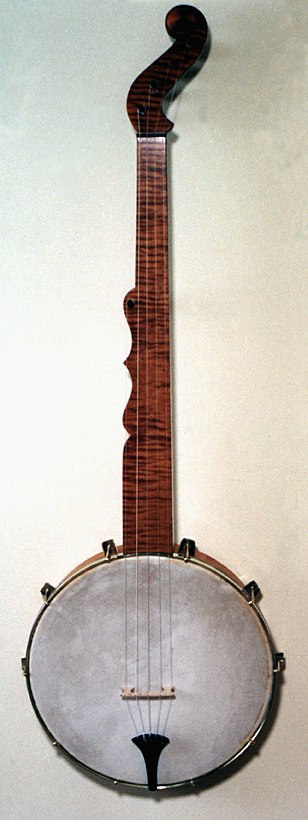School : |
Barefield N.S., Ennis, Co. Clare | |
Module : |
Patch Studies | 5th & 6th |
Title : |
Irish Traditonal Music | |
Lessons : |
4 | |
Themes : |
Musical Instruments | |
| Tin Whistle | ||
| Irish Traditional Dancing | ||
| Music Appreciation | ||
Linkage : |
The Internet, MS Word, MS Publisher, Outlook Express. | |
Peripherals : |
Digital Camera | |
Other Material : |
||
| Implementation: | depening on the particular activity involved, a combination of the following would have been used throught the module ; whole class, group, pairs and individual work. | |
Lesson 1 : |
Musical Instruments |
| . | |
| Aims |
To awaken in the child a sense of our national treasures.
To help them understand our living culture.
Give them a basic outline of the parameters of tradition.
Guide them through their natural curiosity to a feel for Irish music and
To develop a knowledge, understanding and respect for our national traditions, arts and beliefs.
Develop the lessons in a naturally conducive form for the child to gain the optimum enthusiasm for the subject.
Outline the main instruments in use today in Irish traditional music.
Give the opportunity to listen to some of our top players right now.
| Content / Methodology |
Introduction;
The most common dance tunes in the Irish tradition are reels, jigs, hornpipes, polkas,
slides, mazourkas and highlands. Slow airs, usually based on “sean- nos”
singing, are also played. Dance tunes
usually have two eight bar segments known as the “first part” and “the
turn”. Play these twice each and repeat the whole tune two, three, or even four times
and change into another tune.
The dance tunes date from the eighteenth and nineteenth centuries. They are played on a range of instruments.
Content
Listen to BAREFIELD CEILI BANDS “ IOLAR”
CD http://homepage.eircom.net/~sipmfl/index.htm
Instruments featured include fiddle, concert-flute, concertina, piano, drum,
uilleann-pipes, tin-whistle, low-whistle, banjo, button-accordion and harp.
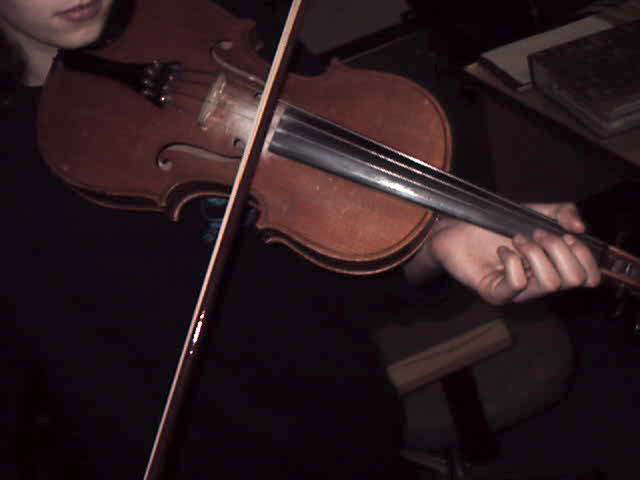 |
Here is a photograph of a Fiddle as opposed
to the classical term “violin”. |
| The fiddles played today in Ireland tend to come from Germany and France. They are cheaper instruments than those played by classical enthusiasts but still retain a vibrant and robust tone to suit dancing or session playing for example in pubs around Ennis | |
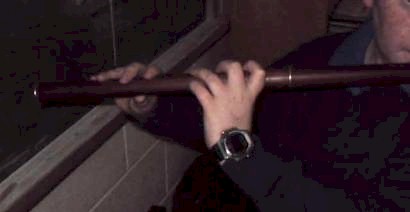 |
Next feature is the concert or wooden Flute. Matt Molloy of the “Chieftains” fame is probably one of Ireland’s best known flautists. His is an unmistakeable tone and fullness of melody with excellent maturity of understanding of the older generation’s tunes and traditions. Other masters include Michael McGoldrick and Garry Shannon http://www.irish-flute.com/ |
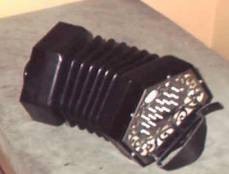 |
The Concertina is of German and Anglo-Saxon extraction but has infiltrated the very heartland of traditional circles in the west of County Clare. Featured here is our very own Mrs.Crotty from Kilrush and even though she died in 1960 her playing is still fresh by today’s high standards of virtuosity as epitomised by Noel Hill otherwise referred to locally as “God”. Just listen to the double-octave playing on this reel…. |
|
Piano playing in traditional (trad) circles tends to be a vamping style for ceili bands such as the Kilfenora and Tulla. Kitty Linnane was the piano player with the Kilfenora and was an inspiration with her driven style and ideal for lifting the feet on the dance-floors of the west of Ireland. |
 |
Uilleann-pipes. (Union Pipes) These are the elbow pipes comprising of a chanter for melody work. Drones and regulators for intonations and harmonies and bellows to inject air into the system. Bag-pipes are the same in principle but the air is blown in by mouth. They never appear in sessions as they are in a different key and are far too loud for indoor use. |
| The uilleann-pipes can be made in any key and are generally quieter than the bag-pipes. Modern exponents are Liam Óg O’Floinn and Ronán de Brun. The greatest legacy is probably that of Willie Clancy who died in 1973 and is remembered by the infamous Willie Clancy Summer School in Milltown Malbay every July. This festival is arguably the best week of Irish music to be found anywhere on the planet. These pipes are a newly hand-crafted beginner set and so don’t have the drones yet as these are very expensive for a young player. | |
|
Banjo: Originally an African instrument brought to America during the slave trade. The banjo is the four-string variety (as opposed to five strings in the southern USA and ballads) and is tuned to G,D,A andE like the fiddle, except it is an octave lower. It was a controversial instrument in traditional circles for many years as it was considered to be an intruder to the tradition. |
| However,
John Carty and Kieran Hanrahan have certainly helped to assuage the fears of the die-hard
traditionalists due to their beautiful and delicate playing of the old music. |
|
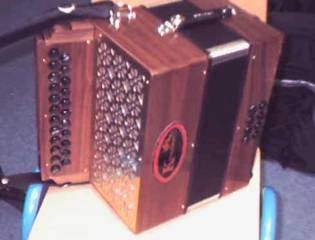 |
Button
Accordion |
|
Harp : the traditional symbol of Ireland and an instrument that is gaining in popularity with the huge trend that is the celtic revival globally. It is smaller than the concert harp and has one set of strings in comparison to the Welsh harp which has three.Today’s harpists are modern and well-trained in the intricacies of counter-point and harmonies. |
| Michael Rooney is a case in point although you also have Paul who plays
with long finger-nails as they did in Turlough O’ Carolan’s time (1670-1738). |
|
| Follow Up Activities |
Lesson 2 : |
The Tin Whistle |
| . | |
| Aims |
- To
help the children’s dexterity and
nimbleness of finger activity.
- Help
them to listen to simple instruction.
- To
improve their knowledge of music in general.
"Give them a sense of making music and the talent involved"
Materials : Tin whistle, scale, tune notes
| Content / Methodology |
The cheapest instrument (£3) and yet the best way to get started playing.
Here is the scale of D and a little tune called “Peg Ryan’s” to get you going.
| Follow Up Activities |
Home practise and practise with friends.
Lesson 3 : |
Irish Traditional Dancing |
| . | |
| Aims |
Get the children dancing and expressing themselves to the music of other children.
Simple movement and social interaction as against the “disco” mentality.
To stimulate an interest in folk dancing.
To bring a sense of “craic” to the educational process.
To learn the movements of a simple dance without worrying about being able to dance per say.
Materials : track 4 from “Iolar”
| Content / Methodology |
“Siege of Ennis”
This is a simple dance of four people opposite four others. GIRL BOY GIRL BOY
BOY GIRL BOY GIRL
Each line holds hands.
GIRL-BOY-GIRL-BOY
BOY-GIRL-BOY-GIRL and lines face each other.
123 in, 123 in, 123 out 123 out and repeat
Break into two couples in each line and swop places like this,
BOY-GIRL(1) BOY-GIRL(2)…….BOY-GIRL (2) BOY-GIRL(1) and back to place.
Then each opposite person swings with each other so 4 couples are swinging around each other. Hold right hands and left hands grasps the partners’ right elbow.
Finish in your original positions to progress to the next four people in line. Repeat the dance four or five times and enjoy yourselves!!
| Follow Up Activities |
Home practising and ceili sessions.
Lesson 4 : |
Music Appreciation |
| . | |
| Aims |
Listen to the tracks carefully and critically.
To compare various forms of dance music.
To further enhance the depth of knowledge and appreciation for our national culture.
Listening for pleasure and appreciation.
Materials : CD list, DeDannan “Ballroom”,No.1 traditional band in the
world. Elizabeth Crotty “Concertina music from West Clare” 1885-1960
Individual concertina player from West Clare.
Kilfenora Ceili Band. “Set on Stone”
No.1 Ceili Band in the world of Irish music.
Liz Carroll. Virtuoso fiddle player from Chicago and composer of some fine tunes.
| Content / Methodology |
Compare and contrast these. What do you think of the tracks you’ve heard? Which did you prefer? Do you hear a difference in approach? Which is the most authentic sound to you? Why did you go for that one? Younger musicians are more influenced by DeDannan Why?
What instruments can you hear? Any harmonies? Are they dominating? Are the melodies old or new? Why do you think so?
Listen again to your favourite track. Listen closely. Can you hear changes in sound or tone or emphasis? Can your expressions? Are they sad? Happy? Thoughtful? Does it make you think? Some of these melodies are 200 years old at least. Mrs.Crotty got her music from people who played around the time of the Great Famine. Find out about this time in Ireland and the immense suffering of the Irish.
| Follow Up Activities |
Attendance an involvement in local musical events.

